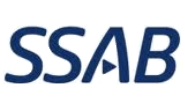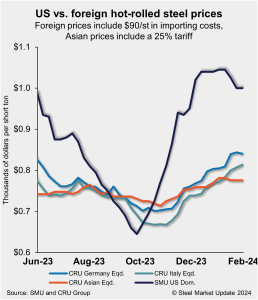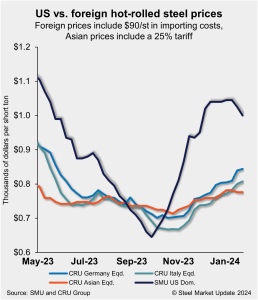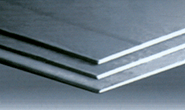
SSAB quarterly results slip on lower prices
A weaker steel market and lower prices in Europe dragged down SSAB’s earnings during the last three months of 2023.

A weaker steel market and lower prices in Europe dragged down SSAB’s earnings during the last three months of 2023.
Steel buyers said mills were much more willing to negotiate spot pricing this week on all products SMU surveys, according to our most recent survey data.
The pig iron market has risen in recent months from the high $390s per metric ton (mt) last fall to $490/mt for Brazilian material and a bit more for Ukrainian product - for an overall average of $495/mt CFR.

US hot-rolled coil (HRC) prices law little movement this week, a similar trend seen in offshore markets. Thus, the price premium domestic hot band carries over imported products was largely unchanged vs. the prior week.

Nucor Corp. announced that its plate mill group would cut prices for as-rolled, discrete, and normalized plate with the opening of its March order book. The Charlotte, N.C.-based steelmaker said in a letter to customers on Tuesday, Jan. 30, that tags would be lowered by $50 per short ton (st) to $1,380/st.

Sheet prices were mixed this week, with hot-rolled (HR) coil unchanged but cold-rolled and coated prices down.
With rising steelmaking capacity and relatively flat demand, industry analysts are predicting lower prices for sheet products this year.

Nucor Corp. reported a decline in profits during the fourth quarter due to lower pricing and volumes.

Cleveland-Cliffs Inc. shipped more than 4 million short tons (st) of steel in each quarter of 2023, pushing its full-year shipments to a record 16.4m st.

I’m writing these final thoughts from the JW Marriott in Tampa. And I’m looking forward to seeing some of you reading this in just a few hours at the opening networking reception of the Tampa Steel Conference. Nearly 550 people will be there – a new record for the event. If you’re looking for things […]

What a difference a few weeks make…. As this is our first column after the new year, it is quite interesting to observe how different the steel world looks at the end of January vs. the end of December.

Brazilian steel maker Usiminas has resumed operations at blast furnace (BF) No. 3 at its Ipatinga works in the state of Minas Gerais. The restart comes after a BRL2.7-billion ($546-million) refurbishment on the unit, which has capacity of three million metric tons (mt) per year.

The state of the US scrap market is not very well understood, according to the dealer trade. It seems steelmakers in several regions are still looking to buy scrap, several sources told SMU.

US hot-rolled coil (HRC) prices declined further this week, easing to their lowest level since late November. And while domestic tags remain notably more expensive than offshore product, the premium has declined as imported hot band tags have moved higher.

What's being talked about in the US steel market this week?

Steel Dynamics Inc. (SDI) reported lower fourth quarter 2023 earnings on Tuesday but predicted good times ahead in 2024. The Fort Wayne, Ind.-based steelmaker posted a Q4’23 profit of $424.3 million, down 33.2% from a profit of $634.9 million in Q4’22 on sales that fell 12.3% to $4.2 billion.
Domestic sheet prices slipped again this week, marking the first week of consecutive declines for hot-rolled (HR) coil since September. SMU’s HR price now stands at $1,000 per short ton (st) on average, down $25/st from last week and down $45/st from the start of the year.
The capacity for EAF steelmaking is growing both in the US and abroad. Ferrous scrap supply has never been more important. A lot of people have viewed the scrap industry as old-fashioned and resistant to change. However, the same forces affecting the steel and other industries are also at play in recycling.

This latest SMU steel market survey is a snapshot of a sheet market inflecting lower. A significant 43% of survey respondents said that the hot-rolled (HR) coil market has already peaked. Compare that to only 8% when we released our last steel market survey on Jan. 5.

CRU forecasts that global demand for steelmaking raw materials will fall month over month (m/m) between mid-January and mid-February. The major downward pressure on raw materials demand will come from China, where steel end-use demand will fall toward the Chinese New Year (CNY) holiday (Feb. 10–17).

The premium plate has held over hot-rolled coil (HRC) has been narrowing but remains elevated compared to historical levels.

The LME three-month price was broadly stable on the morning of Jan. 19 and was last seen trading at $2,170 per metric ton (mt). The $2,200/mt level is now acting as a resistance it seems, but the break of the previous support level has not inspired a sell-off, at least not for now.

When I started in the scrap business many years ago as a rookie trader in Luria’s Cleveland office, I saw an industry composed of family-owned businesses stretching across a great industrial nation.

While there was little change in economic activity since its last update, the Federal Reserve reported declines in manufacturing in nearly all districts in its January Beige Book update.

Much discussion has centered on HRC futures and option liquidity. The perceived lack of liquidity is often used as a reason for not engaging in risk management, a profound folly in our opinion. Looking back over the last decade, the futures market has seen increased volume. The HRC futures volume in 2023 was 617% of 2013 numbers.
US hot-rolled coil (HRC) prices edged down this week while import prices moved higher on average. Domestic hot bands’ premium over cheaper imports declined as a result. But overall, US product remains substantially more expensive than overseas material. All told, US HRC prices are 21.4% more expensive than imports, a premium that is down three […]

What are people in the steel marketplace talking about this week?

Domestic buyers of steel sheet said mills were much more willing to negotiate spot pricing this week, according to our most recent survey data.

The spread between hot-rolled coil (HRC) and prime scrap prices narrowed slightly this month, according to SMU’s most recent pricing data.

There seems to be a growing consensus that the US sheet market has peaked at a high level and could begin losing ground from here. Whether declines happen quickly or whether sheet prices bop around at current levels for a few weeks more is the primary question.